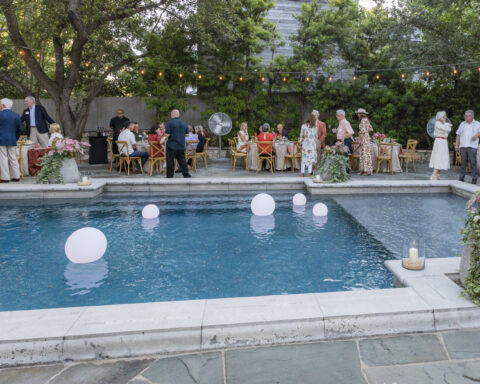
For What It’s Worth is the new book from Phaidon that has people talking. Art people in Texas and beyond. People who love art, invest in art, and want to understand more about the value of art they admire and collect. Here, from the tome is an exclusive excerpt of a conversation with the book’s author and art curator Thomas Feulmer of Dallas of The Rachofsky Collection and curator Lisa Le Feuvre who share an intellectual conversation about all things artful, according to our own art lover, Lance Avery Morgan.
Lisa Le Fuevre: So, where to begin? “For what it’s worth.” It is one of these casual phrases that you use when you’re trying to disclaim something you’ve said. “I am interested in X, for what it’s worth.” It is a ‘get-out’ clause, an announcement of the partiality of value. In this constellation of artworks that we are bringing together in the exhibition, a network of incompatible values is created and, in that very incompatibility, something magical happens.1

Untitled: No 5 of 11, 1992
Plaster and fragments of books
133/4 × 113/4 × 11 inches (34.9 × 29.8 × 27.9 cm)
The Rachofsky Collection

Krleza no. 1, 1977–1978
Globe, acrylic, and tempera on globe made of wood, metal, and paper
85/8 × 113/8 inches (22 × 29 cm) diameter
The Rachofsky Collection
p.67

Mots cachés (Orange), 2020
Glass beads and thread
201/2 × 31/2 inches (52 × 8.8 cm)
The Musée d’art contemporain de Montréal Collection
Our exhibition starts with a collection, The Rachofsky Collection, which brings together a wonderful group of artworks that enables considerations of global conceptual art through its display. Alongside works from the collection, we have included specific pieces that develop our exhibition- investigation further. Thomas, you know this collection so well. I am fascinated by how it brings together artistic practices that demonstrate a constant pushing at networks and systems, whether from Europe, the Americas, Korea, or Japan. If we look at that first wave of conceptual art—a kind of truncated decade from the 1960s to early 1970s—there seems to be such a resonance to the complicated times that we find ourselves living in right now. Why is it that there seems to be this return now to the fundamental concerns of that first wave of conceptual art?
Thomas Feulmer: There are such incredible works in The Rachofsky Collection by artists such as Giulio Paolini, Mario Merz, and Jiro Takamatsu that bridge these early moments in conceptual thinking with work by later artists like Felix Gonzalez-Torres and Rirkrit Tiravanija, and even younger artists like Sherrill Roland and Julia Phillips. To me, there is something urgent right now in thinking through value systems and our relationships with them. We are at an inflection point where there is so much friction in the world—friction in power dynamics, friction between the individual and the system, friction between the gears of the system and who they affect. Conversationally, to say “for what it’s worth” is to drop a pebble in the gears. Is this phrase going to change the movement of the gears? Perhaps. Maybe the pebble will bounce off. Maybe it will get stuck, and the entire thing will screech to a halt and have to be rebuilt. There is an acknowledgment of a power dynamic in that phrase . . . perhaps it’s a minor power, uttered in a minor key, so to speak, but it still has a force. In our times—as there was during the first wave of conceptual art—there is a questioning of global power, of the dynamics of global power, of capitalism, of issues of race, the body, nationalism, political conflicts . . . virtually every value system is being actively interrogated.

Untitled (Passport), 2005
Passport and chrome table
Installation dimensions variable
Passport (closed): 51/2 × 31/2 × 11/2 inches
(14 × 8.9 × 3.8 cm)
The Rachofsky Collection
p. 148; detail, pp. 148–49

Zero Dollar, 1978–84
Offset lithograph on paper
25/8 × 61/8 inches (6.7 × 15.6 cm)
© Cildo Meireles. Courtesy Galerie Lelong & Co., New York
Lisa Le Fuevre: And language is central to that method. When we consider the first wave of conceptual art, often language is seen as being literal words on the page. There is some of that in this exhibition, but language is far more than written words. Language is an articulation and assertion of a belief, a position. Through verbal, or any other kind of utterance, language creates a system of relationships. Once a belief or a position is placed within a language, that moment of articulation creates relativity. It could be relationships among colors, as in red, green, blue. It could be a relationship to weight or length. It could be materials, both tangible and intangible. These relationships, these relativities, form currency—a word that is right at the heart of this exhibition. Currency is exchanged, it is the electricity coursing through the power grid, a flow, a movement between, and it is money. An essay that keeps on coming into my mind, and which has probably been in my mind since I read it, is a text that Andrea Fraser wrote in 2005, titled “From the Critique of Institutions to an Institution of Critique.”2 Fraser says, very simply, that “there is no outside” to the institution. What is the institution? It could be the institution of capitalism. It could be the institution of elected political parties. It could be the institution of art, of collecting, of publishing, of conversation. It could even be the institution of institutions. Traditionally, the institution in the realm of art is the museum. It’s regarded as being the place of authority. This place of authority can only have agency if there are locations of non-authority, the artist-run space perhaps. But that so-called alternative is still part of the institution—a counterpart to the mainstream. The commercial gallery, that is also part of the institution. The private collection, which is so pertinent to our project, that is certainly part of the institution. Everything about art is about values and systems— about symbolic value, use value, exchange value, and value value, whatever value value might be. There really is no outside.









